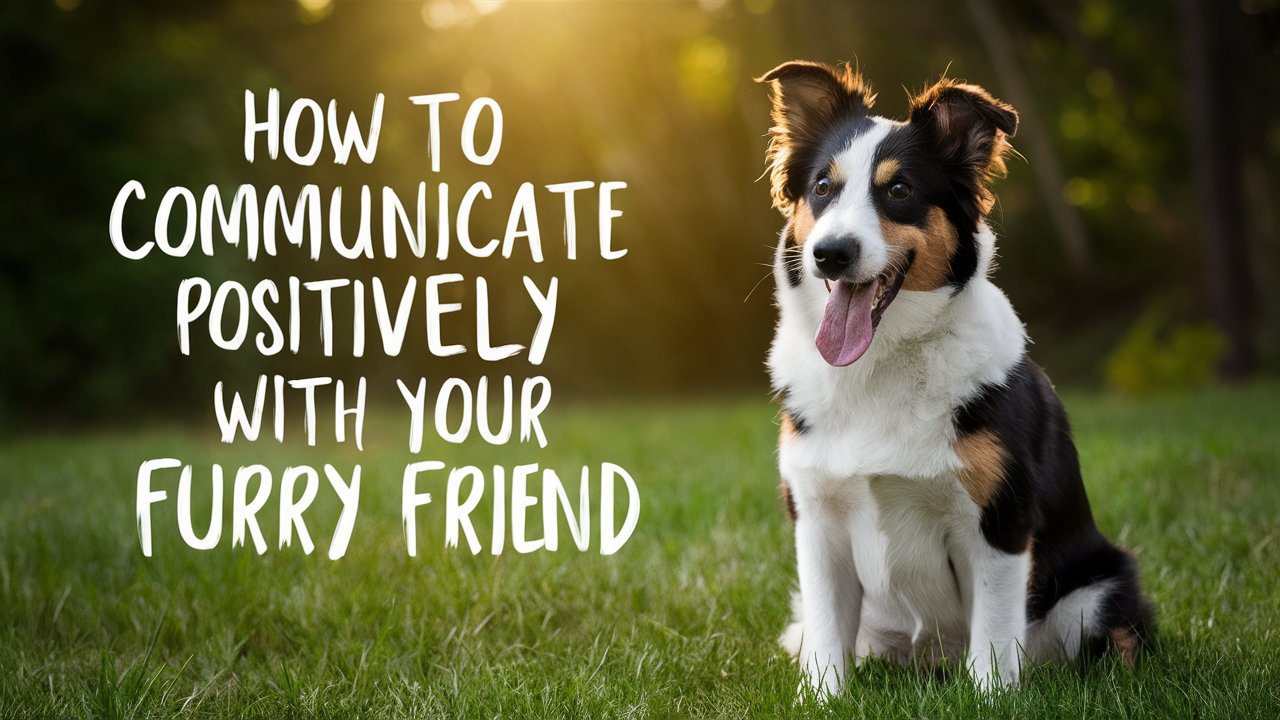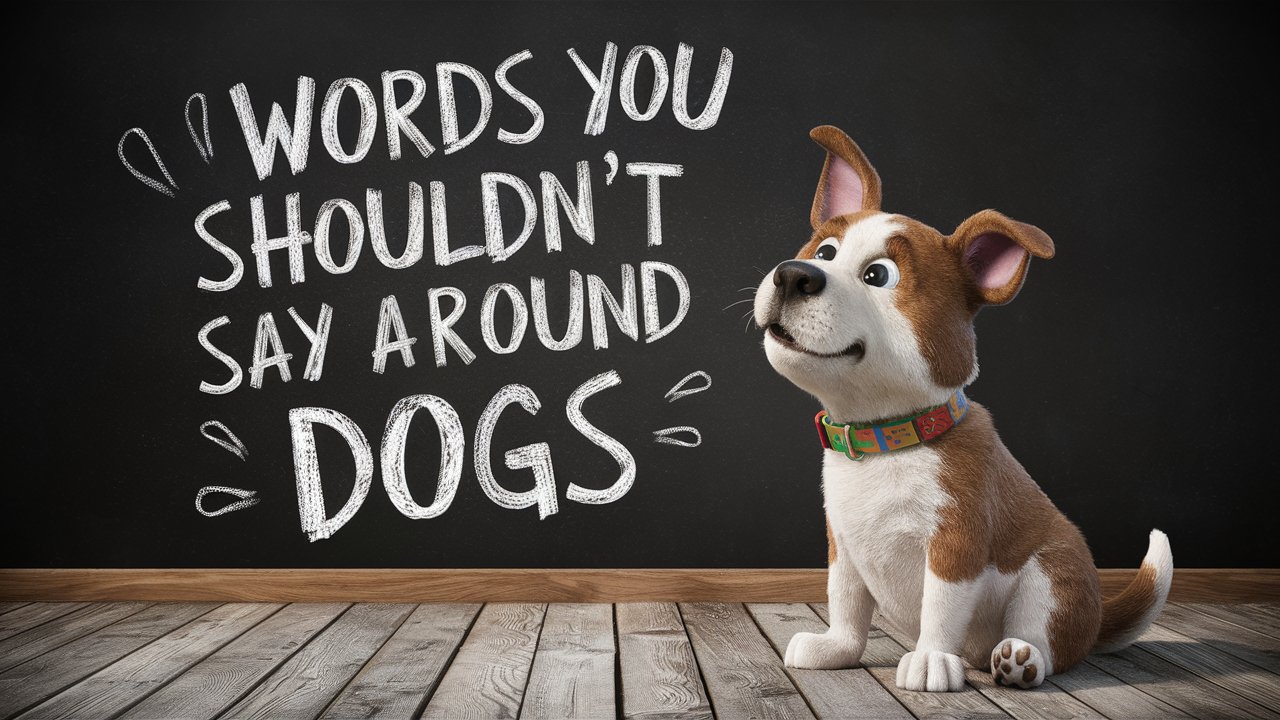
Words You Shouldn’t Say Around Dogs
Dogs are highly sensitive to the words we use. While it might seem harmless, certain words can trigger anxiety, stress, or confusion in your furry friend. Understanding these triggers can help you create a more comfortable environment for your pet.
1. “No”
“No” is a common word used in training, but overuse or inconsistent use can confuse your dog. Instead, focus on positive reinforcement. Reward good behavior, and avoid using “no” for minor infractions.
2. “Vet”
For many dogs, the word “vet” is synonymous with stress and fear. If your dog associates this word with unpleasant experiences, consider using a different term. You could say “doctor” or “check-up” to reduce anxiety.
3. “Bath”
The word “bath” can cause some dogs to panic, especially if they dislike water. Try to use a different word like “spa time” or make the experience more enjoyable by offering treats.
4. “Stay”
While “stay” is a command, overusing it can lead to confusion and stress. Dogs need clear and consistent commands. Reserve “stay” for specific situations and pair it with a positive tone.
5. “Come”
If used in a negative context, the word “come” can lose its effectiveness. Always use this command in a positive, encouraging manner. Never use it to call your dog for something unpleasant.
6. “Walk”
Some dogs get overly excited at the mention of a “walk.” While it’s a happy word, it can also cause anxiety if your dog thinks it’s time to go outside, but you’re not ready. Use the word only when you’re prepared to take them out.
7. “Car Ride”
For dogs that dislike car rides, this phrase can cause stress. If your dog has a fear of the car, try using a different term or work on making car rides more enjoyable.
8. “Leave It”
“Leave it” is a command often used to stop a dog from picking up something dangerous. However, if used too often or in the wrong tone, it can confuse. Make sure to use it only when necessary and in a calm, authoritative voice.
9. “Quiet”
If your dog barks frequently, you might be tempted to say “quiet” often. However, this can lead to stress if not used properly. Teach your dog what “quiet” means in a positive way, rather than using it as a reprimand.
10. “Goodbye”
Saying “goodbye” before leaving can make some dogs anxious. They might associate the word with being left alone. Try to make your departures low-key and avoid using a specific word that signals you’re leaving.

Associated Words to Avoid
Sometimes it’s not just the specific word but also related words that can trigger your dog. Avoiding or replacing these words can help in managing your dog’s stress.
1. Words Related to Walks or Outings
Words like “leash,” “outside,” or even “shoes” can make your dog overly excited or anxious. If you’re not planning to go out immediately, it’s best to avoid these words.
2. Family Member and Pet Names
If your dog has strong associations with the names of family members or other pets, saying these names when the person or pet isn’t around can lead to confusion or distress. It’s best to avoid using these names casually.
3. Negative Tone
Even more than the words themselves, your tone of voice can significantly impact your dog’s emotional state. A harsh or negative tone can cause anxiety, while a calm, positive tone can soothe and reassure your pet.

How to Communicate Positively with Your Furry Friend
Understanding Your Pet’s Language Communication with pets goes beyond words. It’s about understanding their body language, sounds, and behaviors. Each wag of the tail, bark, or purr has a meaning. It’s important to notice these signs.
Use a Calm and Consistent Tone The tone of your voice plays a significant role in how your pet perceives your message. A calm, steady tone helps in reinforcing positive behavior. Consistency is key in ensuring your pet understands what is expected.
Reward Positive Behavior Positive reinforcement is one of the most effective ways to communicate with your pet. Praise, treats, and affection for good behavior strengthen the bond and make your furry friend more likely to repeat the desired actions.
Establish Clear Boundaries Setting boundaries is essential in maintaining a harmonious relationship with your pet. Clear rules help in avoiding confusion and unwanted behavior.
Engaging in Regular Training Training is not just about teaching tricks. It’s an easy way to gain trust and build communication. Short, regular sessions make it easier for your pet to grasp commands and expectations.
Be Patient and Understanding Pets may not always understand what you want right away. Patience is crucial. Repeating commands calmly and giving them time to respond will yield better results.
Use Positive Body Language Your body language should match your words. Pets are highly perceptive and can pick up on your physical cues. Open, non-threatening gestures encourage trust and responsiveness.
Avoid Negative Reinforcement Negative reinforcement, such as shouting or punishment, can damage the bond with your pet. It may lead to fear and anxiety, which hinders communication. Focus on positive interactions instead.
Spend Quality Time Together Spending quality time with your pet strengthens your connection. Whether it’s playing, cuddling, or simply being together, these moments enhance understanding and communication.
Listen and Observe Effective communication is a two-way street. Pay attention to what your pet is trying to convey. Observing their reactions and adjusting your behavior accordingly fosters a deeper bond.

Conclusion
Choosing the right words when communicating with your dog is essential. Understanding which words can cause stress or anxiety will help create a more positive environment for your furry friend. Always strive for clear, consistent, positive communication to ensure your dog feels safe and loved.
FAQs: Words You Shouldn’t Say Around Dogs
What words should you never say to your dog?
Avoid using words like “No,” “Bad,” or “Stop” harshly with your dog. These words can scare or confuse them. Instead, try using positive words and commands that help guide them.
How do you apologize to a dog?
To apologize to your dog, approach them calmly and speak in a soft, soothing voice. You can offer a treat or a gentle pet to show you’re sorry. Dogs respond well to kindness and gentle affection.
What words do dogs react to?
Dogs react to words they know, like “Sit,” “Stay,” “Come,” “Walk,” and their name. They also pay attention to your tone, so using a friendly voice helps them understand what you want.
Is it bad to yell around dogs?
Yes, yelling around dogs is bad. It can make them feel scared or stressed. Dogs prefer calm and clear communication, so it’s better to speak to them in a gentle voice.
Is shouting at a dog abuse?
Shouting at a dog can be seen as a form of emotional abuse. It can make your dog feel scared or anxious. It’s better to train and guide your dog with a calm and positive approach.
Do dogs remember being scolded?
Dogs may not remember being scolded for a long time, but they do remember how it made them feel. If the scolding was harsh, it could make them feel scared in the future. It’s best to correct them gently and right away so they understand.
Can Dogs Have Turmeric?

I’m Haseem Ali, a passionate writer focused on dog diet, health, training, lifestyle, and care. I’m dedicated to sharing expert advice and practical tips to help fellow dog owners provide the best for their furry friends. When I’m not writing, I enjoy spending time with my own dogs and exploring new pet-friendly activities.
